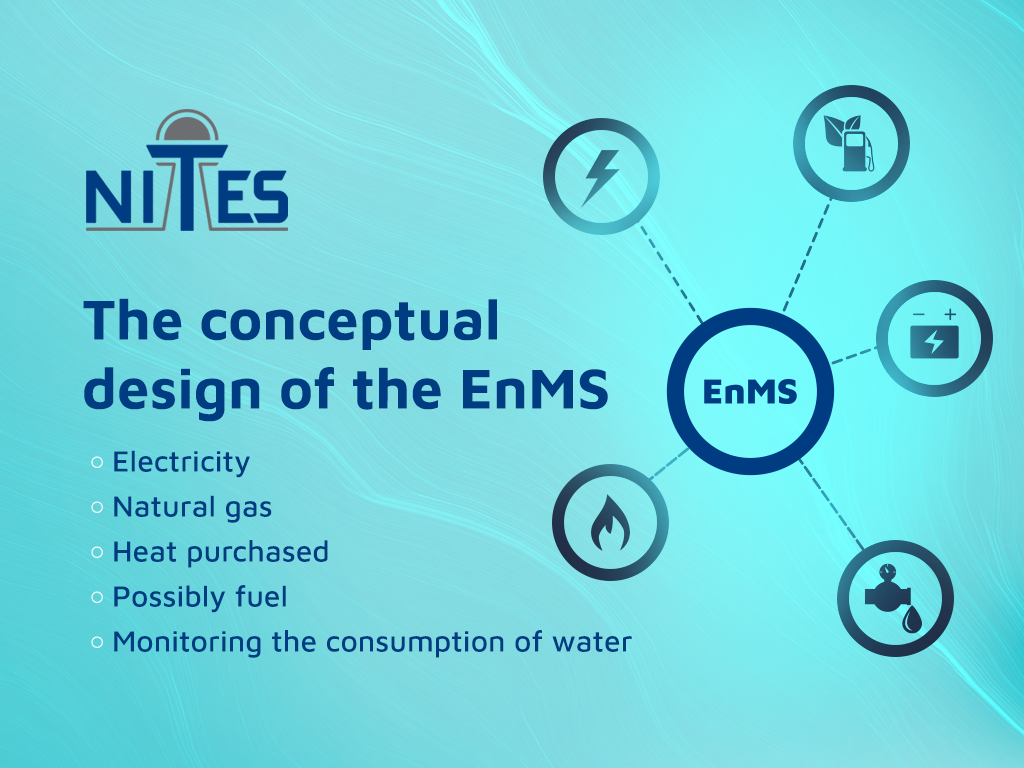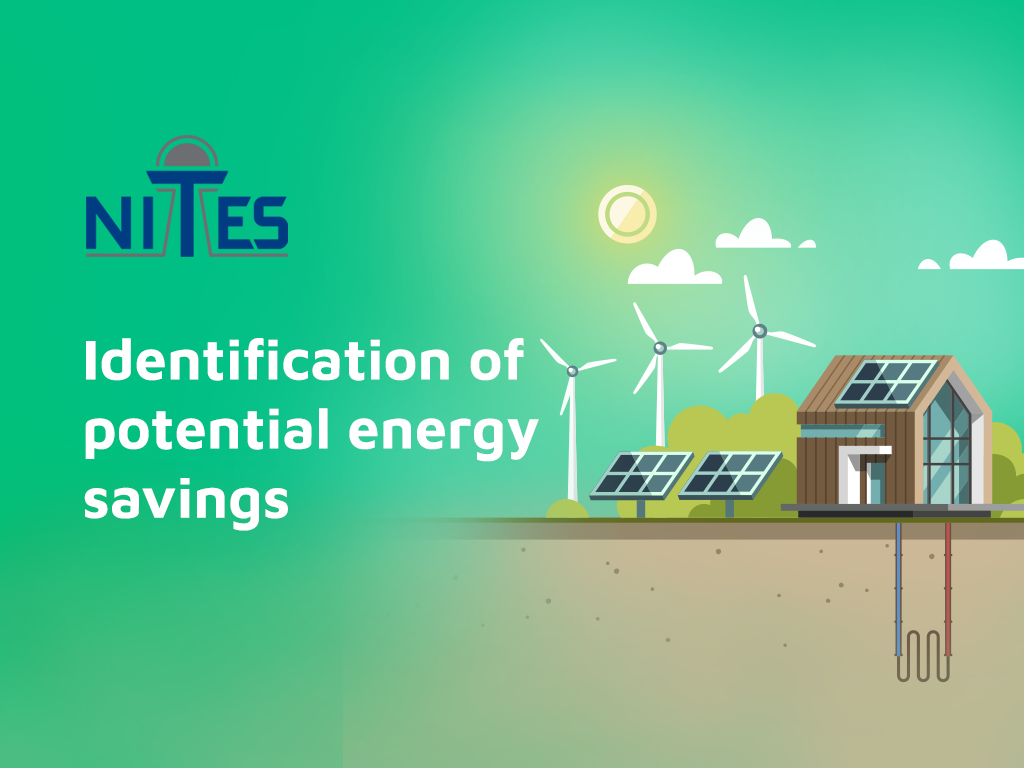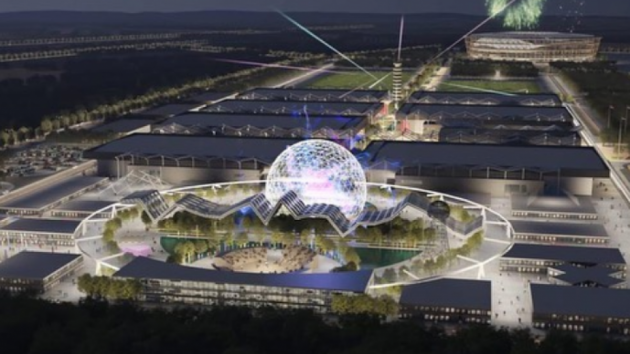NITES – The Conceptual Design of the EnMS
 Tuesday, 06.04.2021.
Tuesday, 06.04.2021.
 12:15
12:15

In addition to defining the basic parameters of the system and the gradual implementation of the steps defined by the standard, it is necessary to specify the technical part of the system, that is, the software tools and hardware resources necessary for its preparation, implementation and commissioning.
The standard itself does not provide an answer to this question. In each concrete case, the way in which the subject of the EnMS system is supervised and the way in which the energy demands are to be carried out adequately needs to be presented individually.
It is very important to know how to carry out a proper quantification of the initial expenditures and the expenditures related to the implementation of EnMS. It is necessary to try to estimate as objectively as possible the energy, economic or other benefits that the energy system can get from the implementation of the EnMS. All the benefits arising from the implementation of EnMS must justify the total costs of its implementation.
In order for the project of the implementation of the EnMS to be complete, it is advisable to further specify the time and the material distribution of the actual implementation, as well as the rules of the subsequent control of the system for possible improvements following its implementation.
The final step is the issue of the energy policy of the organization which is to be influenced by the future EnMS. The main question is whether it needs to be created or not. Its existence in the necessary form certainly provides a certain protection to the EnMS and increases its importance.
Scope and level of details
The defining of the scope and the level of the details of the EnMS is the first step toward the making of the EnMS.
In general, all energy economies that are owned or managed by a single organization, and which need energy, must be integrated into the EnMS. In the industrial sector, these are primarily production facilities, but the same is fully applicable to various parts of the system, that is, various supporting facilities (for example, administrative buildings, transportation structures etc.).
So, the factual definition of the subjects and the scope of the EnMS is based on the principle that it needs to consists of the kind of fund that the future administrator of the energy management system can truly influence and where the costs of its inclusion in the system directly affect the organization’s budget.
The system’s level of details entails which forms of energy or other variables related to energy consumption need to be supervised and estimated within the EnMS.
There is no doubt that the scope of the EnMS needs to encompass the consumption of all the forms of energy that the industry usually utilizes, that is:
– Electrical energy;
– Natural gas;
– Purchased heating energy;
– Potential fuel.
In addition to said forms of energy, it is advisable to oversee the consumption of all types of waters (drinkable, for irrigation, fuel water, technological, utility and water of similar purpose) within the EnMS, which is also not a negligible operating cost, and the current practice of monitoring this consumption shows instances of potential inefficiency.

To analyze the adequacy and identify potential energy savings, it is necessary to simultaneously follow other variables that influence the consumption of energy and potential inefficiencies. Here’s a list of some of them:
– Parameters of the capacities of the production technology;
– Technical parameters of buildings (dimensions, insulation properties of the external structures);
– Exterior and interior air temperatures;
– The amount of heating or electrical energy produced in the organization’s own energy source;
– Consumption of heating for various partial purposes (heating, preparation of hot water, air-conditioning etc.);
– Consumption of electrical energy through selected technical equipment (lighting system etc.);
– The amount of water used for hot water or some other purpose;
– Indoor air quality (humidity, CO2 concentration);
– Sunlight intensity;
– Interior lighting intensity;
– Occupancy (presence of people);
– Number of working hours of the facility and its sub-facilities.
The exact selection of the data that are advisable for certain organizations, their facilities or organizational units cannot be proscribed and must always be determined based on the type of facility and other conditions specific to the certain location.
The second step of forming the EnMS entails the declaration of the frequency of the supervision and estimation of adequate energy consumption.
Considering the level of the validity of the collected data, the frequency of their collection needs to vary greatly.
For those network-based forms of energy, that is, for their measuring spots, where a part of the price consists of the so-called component of the capacity of the rented medium as per the agreement with the supplier, it is technically and economically feasible to introduce supervision on the same frequencies that are used for their pricing (for the used capacity).
For electrical energy consumed in great quantities, it should be the highest measured value of the 15-minute active power within an hour (the so-called 15-minute maximum measures in kW within an hour), and for small purchasers, the current consumption (continuous measurement), because the component of the capacity per price is determined based on the size of the switch (expressed in amperes). Continuous monitoring can also be suitable for the monitoring of the quality of the delivered energy in the sense of over-/under-voltage, the size of the reactive capacity/inductive component or other parameters which can be observed by higher-quality measuring devices.
In the case of natural gas, the need for monitoring relative to the component of capacity per price is relevant for subtraction spots, equipped with “A” or “B” type measurements, that is, continuous measurements, for which the cost of the capacity component depends on the amount of the reserved constant capacity per day (which can be influenced through the proper operations of gas devices in the sense of reduction).
The supply of (remote) heating energy is also increasingly charged for through two components, for which a part of the price is also determined based on the agreed performances (which can be efficiently influenced by proper management), which also justifies regular monitoring.
Only in the case of drinkable water is the charging done for used quantities only, which basically reduces the need for frequent measurement readings. For other kinds of water, either a projected capacity of the water intake, expressed in cubic meters (m3), when there are no devices for the measuring of water intake, or the quantity of the water intake, that is, the water delivered, expressed in cubic meters (m3), when there are such devices, which also justifies more regular monitoring for the purpose of increasing the efficiency, is used.
In the case of other relevant variables, the need for frequent measurement readings vary. For example, one-off collection of data is sufficient for the technical parameters of buildings and the age of the installed technical equipment (unless important changes take place, such as heating insulation). Also, the frequency of the data collection can depend on certain reasons or events in the system (for example, for the purpose of a potential disconnection for the purpose of reduction of direct need for electrical energy or for the purpose of determining the efficiency of the equipment).
A properly installed EnMS design based on the described steps will enable its long-term economic and functional sustainability in energy management. The next phase in its development entails the choice and the implementation of a certain energy efficiency technology.
 Nites d.o.o. Beograd
Nites d.o.o. Beograd
Most Important News
06.04.2024. | Agriculture
Preconditions for Placement of Fresh Blueberries and Dried Plums in Chinese Market Secured

16.04.2024. | News
Jovan Ciric, Leasing Director Retail MPC Properties – MPC Echo symbolizes our desire for good ideas and innovative endeavors to spread freely and bring about positive changes

16.04.2024. | News
10.04.2024. | Finance, IT, Telecommunications, Tourism, Sports, Culture
Creative Industry – What This Serbian Economy Sector Worth EUR 2 Billion Encompasses

10.04.2024. | Finance, IT, Telecommunications, Tourism, Sports, Culture
23.04.2024. | Construction, Transport
Tender for first section of Belgrade-Nis fast railroad from Velika Plana to Paracin announced

23.04.2024. | Construction, Transport
16.04.2024. | News
Economy Fair in Mostar opens – 26 companies from Serbia exhibiting

16.04.2024. | News
22.04.2024. | Industry, Transport
Serbia to develop project of “flying taxis” for EXPO with Airbus – Signing of memorandum announced

22.04.2024. | Industry, Transport


 Izdanje Srbija
Izdanje Srbija Serbische Ausgabe
Serbische Ausgabe Izdanje BiH
Izdanje BiH Izdanje Crna Gora
Izdanje Crna Gora


 News
News






